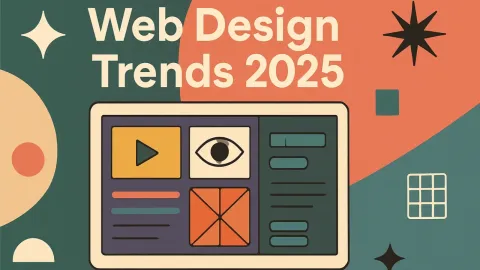Website Preparation Guide: What to Prepare Before Creating Your Site

Quick Answer
Before creating a website, you need to prepare 7 categories of materials: domain name and hosting planning, brand visual assets, website content copy, feature requirement list, reference website collection, contact information organization, and SEO keyword planning. Thorough preparation ensures smooth project execution.
Why is Material Preparation So Important?
Imagine building a house: Starting construction without blueprints will definitely not give you the house you want!
Website creation follows the same principle:
- Sufficient material preparation → Designer understands requirements → Final product meets expectations
- Insufficient material preparation → Repeated revisions and communication → Skyrocketing time costs
Benefits of thorough preparation:
- Reduce project timeline by 40%
- Avoid 80% of unnecessary revisions
- Improve communication efficiency with designers
- Ensure final results meet expectations
- Control project budget effectively
Common problems with poor preparation:
- “This doesn’t look right, let’s redo it”
- “I forgot to mention this feature”
- “Can we change the color scheme?”
- “The content doesn’t match the design”
Step 1: Domain Name Confirmation and Registration Strategy
Your domain name is like your house address on the internet - choose wisely as it’s hard to change later!
Domain Selection Principles
Good domain characteristics:
- Short and memorable: Ideally under 15 characters
- Easy to spell: Avoid complex spellings
- Brandable: Reflects your brand or business
- Extension priority: .com > .org > country-specific domains
Domain to avoid:
- Numbers and hyphens (easily misunderstood)
- Too similar to competitors
- Trademark infringement risks
- Difficult pronunciation or spelling
🔍 Domain Information Checker
Enter a domain name above to check availability across different extensions.
Hosting Selection Considerations
Key factors to consider:
- Performance: Server location and speed
- Reliability: Uptime guarantee (aim for 99.9%+)
- Support: 24/7 technical support availability
- Scalability: Room for growth
- Security: SSL certificates, backup services
- Price: Compare total cost of ownership
Practical Tool Recommendations
Domain registration platforms:
- Namecheap (competitive pricing, good interface)
- Google Domains (integrated with Google services)
- GoDaddy (comprehensive services)
Hosting service providers:
- SiteGround (excellent performance and support)
- Bluehost (WordPress optimized)
- DigitalOcean (developer-friendly)
- Cloudflare Pages (modern static hosting)
Step 2: Design Style Exploration and Positioning
Visual style is the first impression of your website - it must accurately convey your brand personality!
How to Define Your Visual Style
Ask yourself these questions:
- What emotions should my brand evoke?
- Who is my target audience?
- What industry am I in?
- What makes me different from competitors?
Common style directions:
- Minimalist: Clean, simple, focused
- Professional: Authoritative, trustworthy, corporate
- Creative: Bold, artistic, innovative
- Friendly: Warm, approachable, conversational
- Luxury: Elegant, premium, sophisticated
🎨 Style Positioning Tool
🏢 What industry are you in?
👥 Who is your target audience?
🎭 What brand personality do you want to convey?
🎯 What approach do you prefer?
Building Your Reference Collection
Create folders for:
- ✅ Websites you love (and why)
- ❌ Websites you dislike (and why)
- 🎨 Color combinations that inspire you
- 📝 Typography examples
- 🖼️ Layout styles that work for your industry
Great places to find inspiration:
- Awwwards.com (award-winning designs)
- Dribbble (design concepts and ideas)
- Behance (complete project showcases)
- SiteInspire (categorized website gallery)
- Your industry competitors (analyze what works)
Step 3: Color System Planning and Brand Consistency
Colors are powerful - they can influence emotions, build trust, and strengthen brand recognition!
Understanding Color Psychology
Color associations:
- Blue: Trust, stability, professionalism (finance, healthcare)
- Green: Growth, nature, prosperity (environment, finance)
- Red: Energy, urgency, passion (food, sports, sale)
- Orange: Enthusiasm, creativity, friendliness (tech, creative)
- Purple: Luxury, creativity, wisdom (beauty, luxury goods)
- Black: Sophistication, elegance, authority (fashion, luxury)
- White: Simplicity, cleanliness, minimalism (tech, medical)
🎨 Color Palette Generator
Building Your Brand Color System
Essential colors for your palette:
- Primary color: Main brand color (logos, CTAs)
- Secondary color: Supporting brand color
- Accent colors: Highlights, notifications, special elements
- Neutral colors: Text, backgrounds, borders
- Semantic colors: Success (green), warning (yellow), error (red)
Pro tips:
- Limit your palette to 5-7 colors maximum
- Ensure sufficient contrast for accessibility (WCAG guidelines)
- Test colors across different devices and lighting
- Document exact color codes (hex, RGB, HSL)
- Consider color-blind accessibility
Step 4: Website Goal Setting and Strategy Planning
Without clear goals, your website is just a pretty brochure - define what success looks like for your business!
Defining Your Website’s Purpose
Common website goals:
- Lead generation: Collect contact information from prospects
- E-commerce: Sell products or services online
- Brand awareness: Increase recognition and credibility
- Customer support: Provide help and resources
- Content marketing: Share expertise and attract audience
- Portfolio showcase: Display work and capabilities
Setting SMART Goals
Make your goals Specific, Measurable, Achievable, Relevant, Time-bound:
❌ Vague goal: “Get more customers” ✅ SMART goal: “Generate 50 qualified leads per month within 6 months through website contact forms and newsletter signups”
🎯 Goal Setting Planner
Key Performance Indicators (KPIs) to Track
For Lead Generation websites:
- Contact form submissions
- Phone call inquiries
- Newsletter signups
- Download requests (PDFs, guides)
- Quote requests
For E-commerce websites:
- Conversion rate
- Average order value
- Cart abandonment rate
- Product page views
- Customer lifetime value
For All websites:
- Organic search traffic
- Page load speed
- Bounce rate
- Time on site
- Mobile traffic percentage
Steps 5-7: Architecture Planning, Content Details, and Material Preparation
The final steps involve organizing your content and ensuring you have all materials ready for development.
Step 5: Website Architecture and Navigation
Plan your site structure:
- Homepage (clear value proposition)
- About/Company (build trust and credibility)
- Products/Services (what you offer)
- Portfolio/Case Studies (social proof)
- Blog/Resources (content marketing)
- Contact (make it easy to reach you)
Step 6: Content Preparation
Essential content to prepare:
- Company story: Your mission, vision, values
- Product descriptions: Benefits, features, pricing
- Team bios: Build human connection
- Testimonials: Customer success stories
- Contact information: Multiple ways to reach you
- Legal pages: Privacy policy, terms of service
Step 7: Technical Requirements and Final Checklist
📋 Website Preparation Checklist Generator
What type of website are you creating?
Avoiding Common Preparation Mistakes
❌ Common mistakes that cause project delays:
- Starting without clear goals
- Providing low-quality images
- Constantly changing requirements
- Not preparing content in advance
- Skipping competitor research
- Ignoring mobile users
- Forgetting about SEO planning
✅ Best practices for smooth projects:
- Define goals before design starts
- Prepare all content and images first
- Stick to agreed requirements
- Communicate changes promptly
- Research thoroughly before starting
- Plan for mobile-first experience
- Consider SEO from day one
Summary: Systematic Preparation, Half the Success
Proper preparation is the foundation of successful website projects. The time you invest in preparation will save you weeks of revisions and thousands in additional costs.
Your action plan:
- Week 1: Domain research and goal setting
- Week 2: Style exploration and color planning
- Week 3: Content writing and asset gathering
- Week 4: Final checklist review and designer briefing
Remember: A well-prepared website project runs smoothly, stays on budget, and delivers exactly what you envisioned. Take the time to prepare properly - your future self will thank you!
Ready to start building? With this preparation guide, you’re equipped with everything you need to create a website that truly represents your brand and achieves your business goals.



